When the garages are closed is typically where your instrument cluster might illuminate a warm orange check engine light, which is a sign of diagnostics issues like P0014.
Thanks to modern vehicle networking though, it has interpreted warning lights with less ambiguity. If you own a somewhat modern (post-2000) car, definitely consider purchasing an OBD2 scanner (and learning how to use OBD2 scanner).
Plug the scanner in if your engine control unit (ECU) is indicating a fault: P0014 “B Camshaft Position – Timing Over-Advanced”. What does it mean?
- P0014 Code Definition
- How Does Camshaft Timing Work?
- What Causes A P0014 Code?
- Camshaft Position Timing
- Symptoms Of A P0014 Code
- Camshaft Timing Diagnostics
- Troubleshooting P0014 Code
- Frequently Asked Questions (FAQs)
P0014 Code
The ‘P0014’ fault code is a standardized OBD-II code denoting that the ECU has identified a problem with the engine’s exhaust camshaft position, where it’s more advanced than what the ECU has specified. If you have a V-engine, it specifically indicates that the first bank exhaust camshaft is over advanced.
This fault condition is determined once it repeatedly occurs when your ECU is commanding exhaust camshaft phasing, whether it’s advanced or retard. Advance or retard refers to how far your camshaft is rotated clockwise or counter-clockwise respective to its basic ‘zero’ position.
It’s important to note that over-advancing doesn’t mean that your camshaft is broken or phased beyond limits. It means that your camshaft phasing is beyond the range of value attributed to different operating conditions that are pre-defined in the ECU. So if your ECU is expecting to see 5 to 10 degrees of advance, and it’s actually reading 15 degrees, it determines that the camshaft is over-advanced.
To understand the roots of the fault though, it helps to comprehend how camshaft adjustments are carried out. It’s an ingenious system that has been ubiquitous in cars for decades by now.
Camshaft Position Timing
While there might be slight disparities between manufacturers, the idea behind cam phasing is the same. The engine camshaft controls how the engine breathes and when it breathes.
Camshaft adjustment, or phasing, aims to control the latter of the two. Due to how an internal combustion engine functions, it has a variable powerband. Depending on the engine load, it needs to breathe in fresh air sooner or later to remain efficient. It’s also working in tandem with the piston movement.
This is what’s known as variable valve timing (VVT). It’s the process of changing the timing of when the valves are operated to better optimize engine efficiency. It’s important to note that the impact of VVT on performance is rather minimal, as its main purpose is to improve efficiency and emissions.
Commonly, a camshaft adjustment operation is carried out by a phaser at the front of the camshaft. The camshafts can be thought of as ‘floating’ on the pulley, which has channels inside to allow oil flow.
Modern applications incorporate an electric solenoid that can continuously modulate oil flow and thus pressure, to the camshafts. It is this action that actually rotates the camshaft to induce earlier or later valve operation.
P0014 Causes
We know that the P0014 code is triggered by the camshaft timing being advanced out of its range. What are the possible causes for this over-advanced condition though?
If you understand how camshaft-phasers operate, then you’d have a good idea of its main strength and flaw: dependence on oil pressure. The idea of utilizing circulating oil is ingenious but reveals a potential flaw.
P0014 Code, Causes #1. Oil Quality Or Pressure
Because of the dependence on good oil pressure for the cam phaser to operate, you’d need your engine’s oil system to be in good shape. An issue that especially plagued early-generation variable valve timing technology is related to this in fact.
As oil refinement became increasingly advanced, owners started to push their service intervals. This causes a gradual buildup of oil sludge within the engine. The effects are not immediately apparent, but over time the sludging can be severe enough to clog up the oil channels.
This clogging impacts the operating pressure and thus affects the operation of the cam phasers. It’s not just delayed intervals, some owners also switch to inferior oil or the wrong oil that can be too viscous for proper VVT operation.
Due to how it’s tied to oil pressure, the wrong oil level can also trigger the P0014 code. Checking your oil level is easy enough, but do take precautions that a low oil level hints at a potential leak. That said, it’d have to be a rather serious leak for low oil pressure problems to surface.
However unlikely, there’s also a chance that the oil filter used is restricting system flow. This might happen with counterfeit or aftermarket filters which may just affect oil pressure enough to trigger the code.
When properly maintained though, unless there’s a manufacturer fault, variable valve timing systems are typically very reliable. There’s less to go wrong with an oil-based system.
P0014 Code, Causes #2. Failure In The VVT System
Modern VVT systems are electromechanical. Being continuously variable and electronically controlled demands for an ECU-controlled factor – VVT solenoid. The solenoid is actuated to control oil feed into the cam phasers, and this solenoid can be a failure point.
It’s also possible that the wiring is corroded or damaged. The connector or terminal itself may be loose, and the contacts are iffy when there is too much vibration.
Solenoids are laudably reliable in most applications. It’s still possible for them to fail whether it’s due to age or oil issues. Over time they may even start sticking due to dirty oil, which affects the phasing mechanism and reaction time.
Although unlikely, it may also be possible for the cam phasers themselves to be failing. Typically this happens when there’s just too much sludge buildup within to the extent that it’s blocking the phaser.
P0014 Code, Causes #3. Timing
It’s also possible that your timing belt or chain is worn or has skipped a tooth due to a worn tensioner. This can also cause multiple other faults to pop up, which tells you that it’s a timing issue rather than VVT-related.
P0014 Code, Causes #4. ECU
Of course, control of the camshaft adjusting operation is down to the ECU. If there’s an issue with its solenoid driver which is typically PID-based, then it can also over-advance the exhaust camshaft. A failed camshaft position sensor may also falsely report camshaft position values to the ECU, causing it to trigger the code.
P0014 Code, Causes #5. Mechanical Wear
Mechanical wear on the engine components can also lead to a P0014 code. The camshaft, camshaft bearings, camshaft position sensor, and timing gears are all susceptible to wear and tear over time. If any of these components become worn or damaged, it can affect the camshaft timing and lead to the P0014 code.
Additionally, a worn or damaged camshaft or timing gear can cause the camshaft to be out of position, which can lead to the P0014 code. So, it is essential to check these components for any signs of wear or damage and replace them if necessary.
P0014 Code, Causes #6. Sensor Issues
The camshaft position sensor and the crankshaft position sensor are critical for the proper functioning of the VVT system. If either of these sensors is faulty or sends incorrect signals to the ECU, it can cause the P0014 code to be triggered.
A faulty camshaft position sensor may send incorrect camshaft position data to the ECU, causing it to incorrectly adjust the camshaft timing. Similarly, a faulty crankshaft position sensor may send incorrect crankshaft position data to the ECU, causing it to incorrectly adjust the camshaft timing.
P0014 Code, Causes #7. Wiring and Electrical Issues
Wiring and electrical issues can also lead to a P0014 code. Damaged wiring, loose connections, or corroded terminals can all affect the signals sent to and from the ECU and the VVT solenoid. If the ECU does not receive the correct signals from the camshaft position sensor, crankshaft position sensor, or the VVT solenoid, it can lead to the P0014 code.
Ensure all the wiring and connections related to the VVT system, camshaft position sensor, and crankshaft position sensor are in good condition and securely connected.
P0014 Code, Causes #8. Aftermarket Parts
Using aftermarket parts that are not compatible with your vehicle’s specifications can also lead to a P0014 code. Some aftermarket camshafts, cam phasers, and VVT solenoids may not be compatible with your vehicle’s ECU or VVT system, leading to incorrect camshaft timing and the P0014 code.
It is always recommended to use OEM parts or aftermarket parts that are specifically designed to be compatible with your vehicle’s make and model.
P0014 Code, Causes #9. Engine Wear and Tear
As an engine ages, its components naturally wear down. Wear in the engine’s timing chain, for example, can cause the timing to be off, which can result in a P0014 code. Additionally, wear on the valve train components or the camshaft itself can cause the camshaft timing to be off, leading to the P0014 code.
Regular maintenance and timely replacement of worn-out parts are essential to prevent this issue.
P0014 Code, Causes #10. Engine Temperature
Engine temperature can also affect the VVT system and lead to a P0014 code. If the engine is running too hot, it can affect the viscosity of the engine oil, which can affect the operation of the VVT system. Similarly, if the engine is running too cold, it can also affect the operation of the VVT system.
Ensuring that the engine is running at the correct temperature is essential for the proper functioning of the VVT system and to prevent the P0014 code.
In conclusion, the P0014 code can be triggered by various causes, from oil quality and pressure to mechanical wear, sensor issues, wiring and electrical issues, aftermarket parts, engine wear and tear, and engine temperature.
It is essential to thoroughly diagnose the issue and address the root cause to resolve the P0014 code effectively. Regular maintenance and timely replacement of worn-out parts are crucial to prevent this issue and ensure the proper functioning of the VVT system.
P0014 Exhaust Camshaft Position Timing Over Advanced Bank 1
When there ECU has decided that there’s an issue with the camshaft adjusting system, it will trigger the check engine light. The palpable effects of over-advancing may manifest in different ways mechanically though.
If the exhaust camshaft is stuck all the way advanced during starting, it might not be all too perceivable during idling and high-load operation. However, when you’re cruising and looking for on-throttle torque, you may notice quite a dip due to the lack of camshaft overlap. Emissions will be worse too if you get its emissions tested.
Because camshaft adjustment is linked to engine efficiency, the lack of its function will reflect in worse fuel economy. Since the exhaust valve opening angle is used for internal exhaust gas recirculation and scavenging, you’ll be stuck with a less efficacious system overall.
Most of the exhaust camshaft’s operation is dependent on late-closing, or retardation. Therefore an exhaust camshaft stuck in an over-advanced state may cause a rougher running engine because the ECU is perplexed. It may not be overt, but it will feel like the engine is ‘missing’.
While in some cases, you may not even notice the effects at all. In this case, it will still be necessary to carry out repairs because of the implications on the car’s emissions.
P0014 Symptoms
Understanding the P0014 error code in a car is crucial for maintaining its performance and longevity. This error code relates to the camshaft position and timing, and observing it can indicate a myriad of underlying issues.
It is essential for car owners and enthusiasts to recognize the signs and common symptoms associated with the P0014 error code. This section will elaborate on all the possible signs and symptoms one might experience when the P0014 error code is observed and what one should look out for.
The P0014 error code is related to the camshaft position and timing of a vehicle. It can manifest in various ways, such as a rough idle, engine stalling, unusual engine noise, decreased fuel economy, an illuminated check engine light, and a failed emissions test.
If you observe any of these symptoms, it is crucial to have your vehicle inspected by a professional technician as soon as possible. Addressing the issue promptly will help maintain your vehicle’s performance and longevity.
The P0014 error code can manifest in various ways, affecting the vehicle’s performance and overall functionality. Below are some common symptoms associated with the P0014 error code:
1. Rough Idle or Hard Start to the Engine
A rough idle or difficulty in starting the engine is a common symptom of the P0014 error code. The vehicle may struggle to start, and once it does, the engine may idle roughly or unevenly. This is often due to the camshaft position sensor not functioning correctly, leading to improper timing and engine performance.
2. Engine Stalling
Engine stalling is another common symptom of the P0014 error code. The engine may suddenly stall while driving or at idle, which can be quite dangerous, especially while driving at higher speeds.
3. Engine Noise
Unusual engine noise is another sign of the P0014 error code. This noise may be a ticking or rattling sound coming from the engine, indicating that the camshaft and its components are not functioning correctly.
4. Decreased Fuel Economy
A decrease in fuel economy is another symptom of the P0014 error code. The improper timing of the camshaft can lead to inefficient fuel consumption, resulting in lower miles per gallon (MPG).
5. Low Oil Level Warning Light
The low oil level warning light may illuminate on the dashboard when the P0014 error code is observed. This is because the camshaft position sensor and its components require proper lubrication to function correctly.
6. Illuminated Check Engine Light
An illuminated check engine light is a common symptom of the P0014 error code. The vehicle’s Engine Control Unit (ECU) will trigger the check engine light when it detects the P0014 error code.
7. Failed Emissions Test
Failing an emissions test is another symptom of the P0014 error code. The improper timing of the camshaft can lead to increased emissions, resulting in a failed emissions test.
8. Warning Message from the Camshaft Sensor
Sometimes, the camshaft sensor may send a warning message to the ECU, turning the check engine light on. This indicates that the sensor is not functioning correctly and may need replacement.
It is essential to address the P0014 error code as soon as possible to avoid further damage to the engine and its components. If you observe any of the symptoms mentioned above, it is recommended to have your vehicle inspected by a professional technician. They will be able to diagnose the issue accurately and recommend the necessary repairs or replacements.
In some cases, the P0014 error code may be triggered by a faulty camshaft position sensor. Replacing the sensor may resolve the issue. However, in other cases, the error code may be due to a more serious issue, such as a damaged camshaft or timing chain. It is crucial to have a professional technician assess the situation to determine the root cause of the problem and recommend the appropriate course of action.
P0014 Diagnosis
Before the diagnosis of P0014 is carried out, it’s important to approach the fault holistically. Are there other related faults determined? Understanding how faults can relate and possibly trigger each other is a crucial skill in diagnosing any fault.
When it comes to over-advanced or over-retarded faults, there’s a good chance that it’s caused by a clogged oil channel feeding in to the camshaft phaser. It always helps to perform simple checks first though.
- Check the oil level and determine the condition.
It helps to know the history of the car and how regularly is it serviced. What viscosity is the oil used? Typically using the wrong oil viscosity will have other telltale signs too.
Then a visual inspection of:
- Connectors
- Wiring
- Solenoid operation.
The exacts differ from vehicle to vehicle, but the working principles of variable valve timing systems are generally similar.
Scanners capable of capturing freeze-frame fault data can also be helpful in identifying the operating condition that generates the fault. Depending on the marque, a self-check of the solenoid and camshaft adjusting operation can also be carried out.
Common Mistakes When Troubleshooting P0014
Once the pertinent fault has been determined, steps can be taken to remedy it. The easiest repairs can be made. It’s important that only once the true source of the problem is determined before a repair is attempted.
It’s easy to throw parts at the problem and in the end, it may not even provide a solution. The first thing that should be done before diagnosing is to check whether the issue is a persistent one and whether it comes back after the initial erase.
If the ‘P0014’ code is a stored fault that has only been triggered once or twice, it may not even be a relevant fault at all. Ensure that the oil level and condition are OK first. A once-over of the wiring condition is also standard procedure for intermittent faults.
If it’s a current fault or recurring, then you should start working from the easiest to hardest things to check. Don’t take anything for granted while performing a diagnosis. Sometimes, manufacturers may offer a guided test to help you in diagnosing your woes.
A noteworthy possibility is a skipped timing belt/chain. This can happen due to a worn tensioner, guide, or even the timing chain or belt itself. The effects of an out-of-time engine are quite pronounced though and can trigger the P0014 code along with others.
1. Avoiding A Re-Emergence Of P0014
P0014 and related codes are frequently triggered due to negligence. There are car owners out there that never get normal a service carried out. Out of warranty, there’s also a tendency for owners to save on a service or two, or just wait for a longer interval.
The effects of a neglected internal combustion engine are well documented. Stick to manufacturer-approved engine oil or at least ones from reputable manufacturers with the right viscosity for your engine.
It’s not often covered, but if the car is only driven for short distances all the time, then that can cause engine oil to sludge up. An engine that constantly works in short cycles doesn’t have enough time to warm up properly and burn off deposits.
In fact, frequent short-distance driving contributes to some very common issues brought up by many car owners. Over a long period, it may even cause serious carbon deposits and a gunked-up engine.
To fix this, sometimes all a technician needs to do is bring your car out and drive it hard. Dubbed the ‘Italian tune-up’ (for more context, check out our guide on what does a tune-up consist of), it’s a tested ‘repair’ method for a sluggish engine. Therefore, it’s a good idea to let your car stretch its legs out on the motorway from time to time.
2. Self-Diagnosing And Carrying Out Repairs
If you’re a keen DIY person and don’t mind learning from the experience, this code can prove to be a decent mind exercise. It can be done with simple tools that every car owner should have.
The first thing you should do is perform a scan through your OBD2 scanner. Take note of all the codes present, as there might be multiple other consequential codes as a result of the underlying problem.
If the fault code is valid, and symptoms are present, the first thing you should check is your engine oil level. Consult the owner’s manual for what your oil level should be, what engine oil should be used, and what viscosity is applicable to your vehicle.
Given that everything oil-related looks good, the next thing you should do is perform a visual inspection. Check the wiring, connectors, and the solenoid themselves for damage, corrosion, or wear.
If your OBD2 scanner is capable of carrying out self-tests, then it should be possible to perform a self-check of the exhaust camshaft adjustment function. This includes the oil control valve and camshaft phaser, which once actuated should affect the camshaft position.
Basics
- Scan with OBD2 Scanner
- Check if your engine oil level
- Perform a visual inspection
- Wiring
- Connectors
- Solenoid for damage, corrosion, or wear
- Perform self-test via OBD2
It’s really easy to overlook wiring and electrical issues that aren’t overt. Therefore, be sure to give your wires a thorough once over before you eliminate them as a possibility so you don’t end up scratching your head. Sometimes even loose connectors are enough to trigger the code due to vibrations.
3. Advanced Diagnosis On P0014
Given that you have an older car with a broad enough community, you might even be able to find the electrical manual for your engine. It should provide you with a wiring diagram, diagnosing steps, what to look for, and technical specifications.
This is generally only applicable to European makes. If you suspect that it is indeed your adjuster magnet that’s failing, then performing a swap between the intake and exhaust camshaft solenoid can help you pinpoint the issue. Other makes may have integrated solenoid and spool valve units that are oriented differently between the exhaust and intake sides.
You can suspect the spool valve that controls the oil flow if none of the above is applicable. It’s possible that the spool valve is clogged and impacting oil flow within the circuit. If you’re fortunate, an oil change should rectify this issue. If your car has a filter screen for the spool valve, then you can just replace that.
Do take note that in some cases, other codes can trigger P0014 as well. Ergo, ‘P0335’ indicates that there’s an issue with the crankshaft position sensor. Thus the ECU doesn’t know the precise condition of the engine and thinks that the exhaust camshafts are over-advanced. You should definitely rectify the P0335 code beforehand.
Finally, it is also possible that your timing chain or belt has skipped a tooth. In this instance, there will certainly be a bit more telltale signs than just ‘P0014’, but it’s a possibility.
Overview
- Thoroughly check all related wires
- Use wiring diagrams
- Swap between the intake and exhaust camshaft solenoid
- Oil change
- Hard drive
- Replace filter screen for spool valve
- Look for other codes – etc P0335
- Investigate timing
Camshaft Timing Code Facts:
- The P0014 code is an OBD-II generic code related to the engine control module (ECM).
- The code indicates that the bank 1 exhaust camshaft is more advanced than what the ECM has commanded it to be.
- The advanced condition may occur during advancing or retarding of the camshaft timing.
- The P0014 code can be caused by a clogged oil passage, seized camshaft phaser, or a shorted oil control solenoid.
- Symptoms of the code include the check engine light coming on, reduced fuel mileage, and rough engine performance.
- To diagnose the P0014 code, a mechanic may perform a visual inspection, check the oil level and condition, and run engine tests.
- Common mistakes when diagnosing the code include not following manufacturer test procedures and replacing good components.
- The P0014 code can cause the engine to run erratic, stall, or have a hard starting problem.
- Repairs for the code may include resetting the fault codes, replacing the oil and filter, repairing or replacing wiring, or replacing the timing chain and camshaft phasers.
- A worn timing chain or tensioner failure may also cause the P0014 code.
Frequently Asked Questions (FAQs)
How To Fix Code P0014
P0014 denotes that there’s an error with your engine’s camshaft adjusting system. Often, the camshaft position timing is over-advanced compared to its default setting, particularly one that controls the exhaust valves. However, the underlying cause can be numerous, so it’s crucial that you diagnose P0014 carefully to find the exact cause. You can start by checking the engine oil level. If the oil level is too low, or if the oil is too burnt up, sludgy, and worn, you can mostly fix P0014 by changing the oil. Otherwise, you can then move on to visually inspecting the VVT (variable valve timing) solenoid. Look around the solenoid’s wiring, connectors, and the solenoid housing itself. Specifically, note down any physical damage, wearing, or sometimes, corrosion.
What Does Code P0014 Mean
The OBD error code P0014 can be defined as your engine’s camshaft position timing, particularly one that controls the exhaust valves, being over-advanced. In other words, its camshaft phasing is beyond its default range, as was defined and programmed in your car’s ECU. Advanced or Retard in the camshaft position timing (or phasing) is measured in degrees. Either an Advanced or Retard is determined by how far it’s being rotated, clockwise or anti-clockwise, from its standard zero position. For example, your engine might be tuned to accept 5 to 10 degrees of advanced in the camshaft phasing. But if it’s too far out of alignment, and has instead phased by 15 degrees, then your ECU will detect that and mark it down as being over-advanced.
What Causes Code P0014
P0014, which specifies that your engine’s camshaft position timing is over-advanced, relates to a car’s variable valve timing system. The latter is highly dependent on oil pressure, as cam phasers use hydraulic pressure from your motor oil to dynamically vary the angle and positioning of the camshafts. Thus, the most common cause of why you’re seeing a P0014 error is that your engine oil could be constrained by too much sludge build-up. This can happen if you don’t change your oil in a long time, which can clog up the oil flow. Hence, causing a reduction in oil pressure. Other than that, using the wrong oil, such as filling up with oil that’s of a different viscosity than what your engine was made for, could also cause this.
How Long Can You Drive With Bad Cam Phasers
Driving with bad cam phasers is a terrible idea. In theory, you can still drive around for a little while. So, use this time wisely to head over to a garage that’s near where you are. It’s not always clear when the bad phasers would finally fail, but it’ll make itself audible. Often, you’ll hear clanking, tapping, or knocking sounds inside the engine, and it’ll progressively get louder as it’s closer to its breaking point. Nevertheless, don’t wait until it’s too late since bad cam phasers (when they fail completely) you risk destroying your engine’s variable valve timing system. In so doing, your engine may not idle evenly, or would even fail to start altogether. Thus, compromising your engine’s camshaft and its ignition timing, and leaving significant damage to the engine.
What’s A Camshaft
A camshaft is a lobed shaft that sits near the top of your engine. These egg-shapes lobed and pointed cams are synchronized with the movement of the crankshaft. The latter of which sits at the bottom of your engine, and turns your pistons’ up and down motion into rotational energy that can then be used to power your car. Meanwhile, the camshaft’s job is to synchronize the movement of the crankshaft and pistons. Thus, pushing down on the valves that lead into the combustion chamber, either opening or closing them. As your engine runs, the camshaft would open the intake valves, forcing air and fuel to enter the combustion chamber. Once it’s been ignited, the next combustion cycle continues, as the camshaft opens up the exhaust valves. This would exhaust the combustion by-products and fumes out of the engine.
What Are The Symptoms Of A Bad Camshaft Position Sensor
Longer starting time, poor running engine, bad emissions, check engine light on.
My 2003 Chevrolet Trailblazer Has The Codes P0014 And P1345, What’s Wrong
It’s a common issue with the Atlas straight-6 used in the Trailblazer. It can be down to a clogged filter screen, failed camshaft position actuator, or even stretched timing chain. Reading up on the various diagnosis cases should give you a rough idea of what to do.
How To Reset The P0014 Error Code On A GMC Canyon
Fault codes can be reset after the issue is rectified. Otherwise, it will come back moments after a reset.
P0014 Code Repair Cost
It depends on the underlying fault. It can be as affordable as a $50 oil change, a $100 sensor replacement or it can be a $1,000 timing job.
Can Low Oil Cause P0014
Definitely. Low oil levels can also generate a myriad of other codes and issues. Be sure to check if your car isn’t excessively consuming oil or leaking oil instead of just topping it off.
What Is Exhaust Camshaft Position Timing
It refers to the phasing of the exhaust camshaft, how much is it advanced or retarded in relation to its base position.

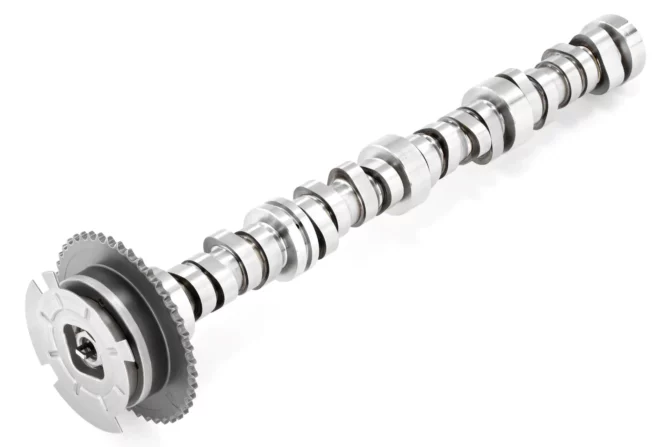
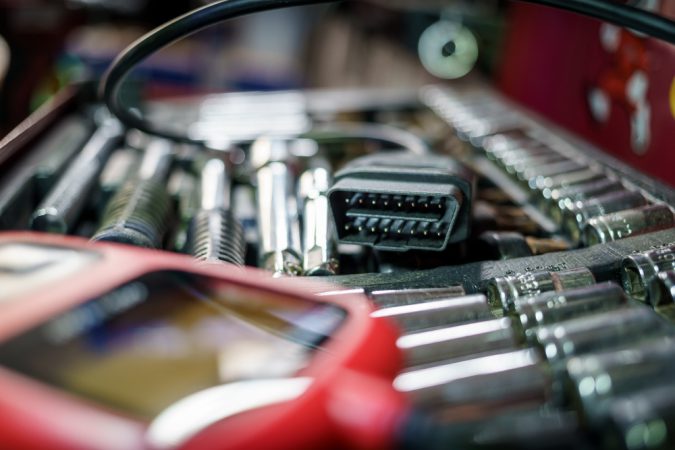
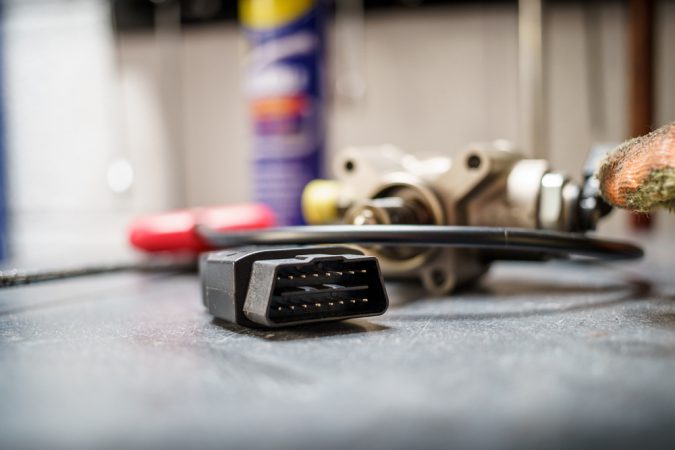
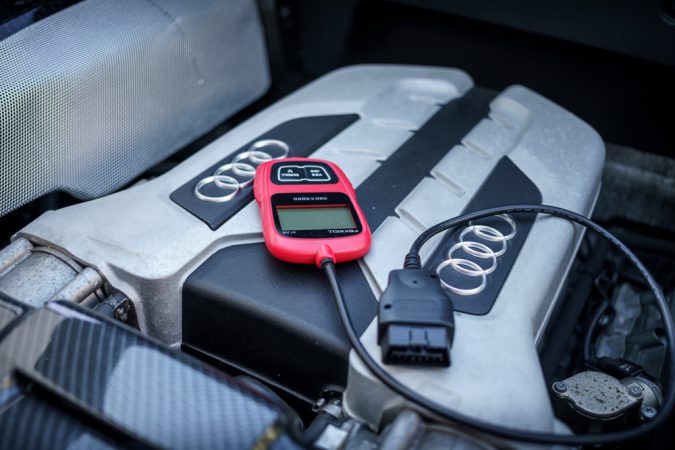
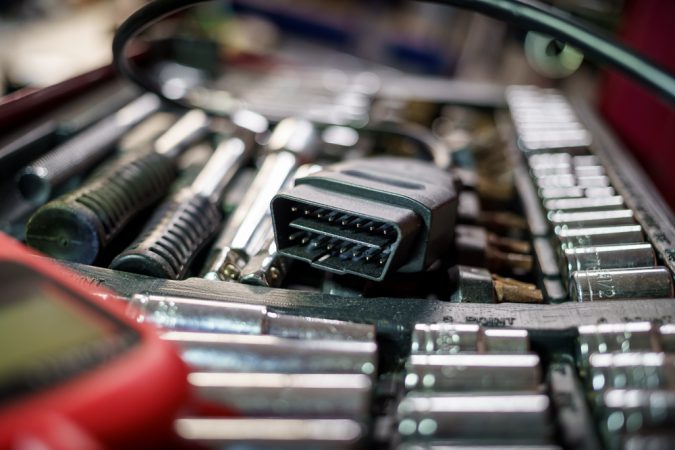
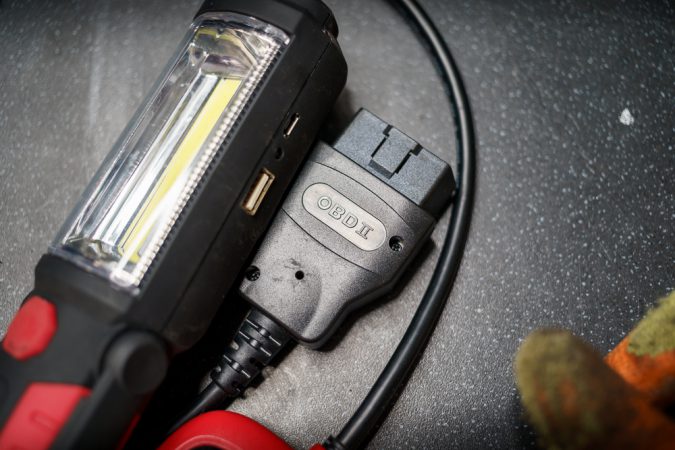
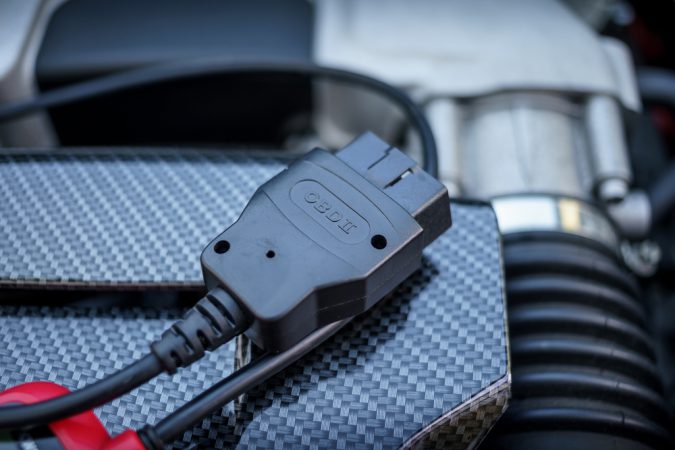
I love your article! The content is very valuable. It shows that you spent time researching this and you have managed to turn it into an incredible piece of valuable content.
Thanks for the comment, Andy Shane!
We’ve put a lot of research into all of our articles, and I’m glad you’ve found it useful 🙂
At last someone that explains something in detail and knows what there talking about. Well done.
Thanks for the comment, arnold cunningham!
Cheers, I’m glad that our guide here has been of some help 🙂
It’s very informative thanks alot
Thanks for the comment, Weam!
Cheers, glad it helped 🙂